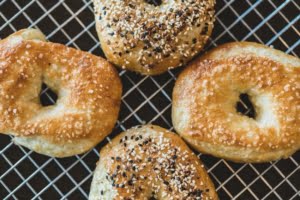How Fresh Bread and Pastries Helped Doctors Identify Cancer

A major research pathway in the world of medical imaging is in the field of artificial intelligence and machine learning, which are used to help doctors identify cell samples that potentially show signs of cancer.
There is a range of systems available, each rapidly evolving as AI permeates into many facets of life and evolves to meet the needs of various industries.
However, the earliest and most incredible example of this is how a system designed to scan for freshly baked bread and pastries became a major tool in some hospitals to help doctors efficiently scan for cancer in cell samples.
For context, Japanese bakeries do not sell packaged bread products, because bread in the open looks fresher and more appealing.
With these bakeries expanding their product ranges dramatically, it was getting increasingly difficult for customer service staff to efficiently serve customers as they needed to memorise a lot of different pastry types.
In 2007, a lot of scanning systems relied on barcodes or used somewhat rudimentary AI recognition technology that typically could only recognise standardised shapes and designs, which given that baking is not always consistent, led to confusion.
Enter BakeryScan, an advanced AI scanning system that could be trained to accurately detect different types of bread, work out when a pastry had ripped or was two separate items, could detect different bread items touching and was heralded for its accuracy by the baking world.
However, a decade later, a doctor based at the Louis Pasteur Centre for Medical Research in Kyoto had a brilliant idea. As cancer cells could in some cases look similar to these pastry products, a custom baking scanner could be used to efficiently look for cancer cells.
This led to the development of Cyto-AiSCAN, which uses the same technology to analyse an entire slide of cells with an accuracy level of 99 per cent, allowing for quicker cancer diagnoses and potentially saving countless lives in the process.